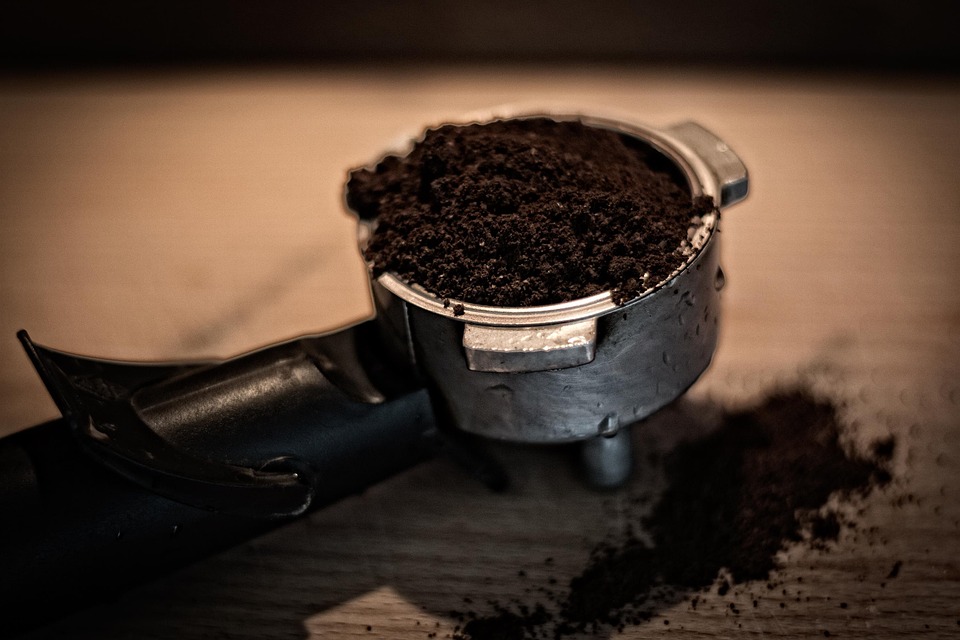How to Export Coffee to Japan: A Comprehensive Guide
How to export coffee to Japan is a venture filled with opportunity, given Japan’s significant and growing coffee consumption. However, navigating the complexities of import regulations, quality standards, and cultural nuances is crucial for success. This comprehensive guide will provide you with a detailed understanding of the process, ensuring a smooth and profitable entry into the Japanese coffee market.
1. Market Overview: Japan’s Coffee Consumption
Japan is a mature and sophisticated coffee market, ranking among the top five coffee consuming nations globally. While instant coffee previously dominated, there’s a surging demand for specialty coffee, driven by a growing appreciation for quality, origin, and brewing methods. Key trends include:
- Specialty Coffee Boom: Consumers are increasingly seeking single-origin beans, artisanal roasters, and unique flavor profiles. This is fueled by the expansion of independent coffee shops and the influence of third-wave coffee culture (Specialty Coffee Association of Japan, 2023).
- Demand for Sustainability: Ethical sourcing, fair trade practices, and environmental responsibility are becoming increasingly important to Japanese consumers. Coffee labeled as sustainable or ethically sourced gains a competitive edge (Japan External Trade Organization (JETRO), 2022).
- Convenience & Ready-to-Drink (RTD) Coffee: The RTD coffee segment is large and continues to grow, offering a convenient option for busy consumers. This market ranges from canned coffee sold in vending machines to high-end bottled cold brews (GlobalData, 2023).
- Preference for Mild & Balanced Flavors: While preferences are evolving, many Japanese consumers generally prefer coffee with a balanced acidity and a milder, less intense flavor profile (Nielsen Japan, 2021).
- Emphasis on Packaging & Branding: Japanese consumers place a high value on aesthetics and attention to detail. Attractive and well-designed packaging can significantly impact consumer perception and purchase decisions.
2. Preparing for Export: Due Diligence and Product Quality
Before embarking on the export process, thorough preparation is essential:
- Market Research: Conduct in-depth research to identify your target market segment. Determine the type of coffee you will export (green beans, roasted beans, ground coffee, instant coffee, RTD), understand consumer preferences, and analyze competitor activity. JETRO and the Specialty Coffee Association of Japan (SCAJ) are excellent resources for market data.
- Quality Control: Japan has stringent quality standards for imported food products. Ensure your coffee consistently meets or exceeds these standards. This includes factors such as bean quality, roasting consistency, freshness, and packaging integrity. Implement a robust quality control system throughout the entire production and processing chain. Consider obtaining certifications such as ISO 9001 for quality management.
- Sampling and Analysis: Provide potential buyers with samples of your coffee. Have your coffee professionally cupped and analyzed by a certified Q-grader to obtain a detailed flavor profile and quality assessment. This information is crucial for marketing your product effectively.
- Sustainability & Traceability: If you are promoting your coffee as sustainable or ethically sourced, ensure you have the necessary certifications (e.g., Fair Trade, Rainforest Alliance, UTZ) and traceability systems in place to verify your claims (Fairtrade International, 2023).
- Develop a Business Plan: Create a comprehensive business plan that outlines your export strategy, target market, pricing, marketing plan, financial projections, and risk assessment.
3. Regulatory Requirements & Import Procedures
Understanding and complying with Japanese import regulations is paramount:
- Food Sanitation Law: The Food Sanitation Law is the primary regulation governing food imports in Japan. This law covers various aspects, including food additives, pesticide residues, and hygiene standards (Ministry of Health, Labour and Welfare (MHLW), Japan, 2023).
- Plant Protection Law: Green coffee beans are subject to the Plant Protection Law, which aims to prevent the introduction of plant pests and diseases. An import inspection certificate issued by the exporting country’s plant protection authority is typically required (Ministry of Agriculture, Forestry and Fisheries (MAFF), Japan, 2023).
- Customs Tariff Law: Coffee imports are subject to customs duties and consumption tax. The tariff rate varies depending on the type of coffee (green beans, roasted beans, etc.) and the country of origin. Refer to the Japan Customs website for the latest tariff schedules (Japan Customs, 2023). Economic Partnership Agreements (EPAs) between Japan and certain countries may offer preferential tariff rates.
- Labeling Requirements: All food products imported into Japan must comply with strict labeling requirements. Labels must be in Japanese and include information such as the product name, ingredients, country of origin, net weight, expiration date, and the name and address of the importer. Consult with a Japanese labeling expert to ensure compliance.
- Import Procedures:
- Appoint an Importer: You will need to work with a registered importer in Japan who will be responsible for clearing your goods through customs.
- Prepare Documentation: Gather all necessary documentation, including the commercial invoice, packing list, bill of lading, import declaration, and any required certificates (e.g., phytosanitary certificate).
- Import Inspection: Your shipment will be subject to inspection by the quarantine station and customs authorities. This may involve visual inspection, laboratory testing, and document verification.
- Customs Clearance: Once your shipment passes inspection and all duties and taxes are paid, customs will release your goods.
4. Finding the Right Partner: Distributors & Importers
Establishing strong relationships with reliable partners is crucial for success in the Japanese market:
- Distributors: Distributors have established networks and expertise in specific market segments. They can handle distribution, sales, and marketing of your coffee to retailers, coffee shops, and other businesses.
- Importers: Importers specialize in clearing goods through customs and handling import logistics. Some importers also act as distributors.
- Trade Shows and Events: Attend trade shows and industry events in Japan to network with potential partners and showcase your coffee. SCAJ Conference & Exhibition is a major event for the specialty coffee industry.
- JETRO Support: JETRO offers various services to assist foreign companies in finding partners in Japan, including business matching events and online databases of potential partners.
- Due Diligence: Conduct thorough due diligence on potential partners to ensure they have the necessary experience, resources, and financial stability. Check their references and speak to their existing clients.
5. Marketing & Branding for the Japanese Market
Tailoring your marketing and branding to the Japanese market is essential:
- Japanese Language Marketing Materials: Translate your marketing materials, including brochures, websites, and social media content, into Japanese.
- Highlight Origin and Story: Japanese consumers are interested in the origin and story behind your coffee. Emphasize the unique characteristics of your beans, the farming practices used, and the history of your company.
- Emphasize Quality and Craftsmanship: Highlight the quality, craftsmanship, and attention to detail that goes into producing your coffee.
- Packaging Design: Invest in high-quality and aesthetically pleasing packaging. Consider using traditional Japanese design elements.
- Build Relationships: Building personal relationships is crucial in Japanese business culture. Take the time to meet with your partners and customers in person.
- Social Media Marketing: Utilize Japanese social media platforms, such as LINE and Twitter, to engage with consumers and build brand awareness.
6. Key Considerations for Success:
- Patience and Perseverance: Building a successful business in Japan takes time and effort. Be patient and persistent in your efforts.
- Cultural Sensitivity: Be mindful of Japanese business etiquette and cultural nuances.
- Long-Term Commitment: Demonstrate a long-term commitment to the Japanese market.
- Continuous Improvement: Continuously monitor market trends and adapt your products and strategies to meet changing consumer preferences.
Conclusion
Exporting coffee to Japan offers significant opportunities for coffee producers and exporters. By understanding the market dynamics, navigating the regulatory landscape, building strong partnerships, and tailoring your marketing efforts, you can successfully establish a foothold in this lucrative market and cultivate long-term growth. Thorough research, attention to detail, and a commitment to quality are essential ingredients for success.
Sources:
- Fairtrade International. (2023). Fairtrade Standards. Retrieved from https://www.fairtrade.net/
- GlobalData. (2023). Japan Coffee Market Analysis.
- Japan Customs. (2023). Customs Tariff Schedules. Retrieved from https://www.customs.go.jp/english/
- Japan External Trade Organization (JETRO). (2022). Coffee Market in Japan. Retrieved from https://www.jetro.go.jp/en/
- Ministry of Agriculture, Forestry and Fisheries (MAFF), Japan. (2023). Plant Protection Law. Retrieved from https://www.maff.go.jp/e/
- Ministry of Health, Labour and Welfare (MHLW), Japan. (2023). Food Sanitation Law. Retrieved from https://www.mhlw.go.jp/english/
- Nielsen Japan. (2021). Consumer Trends in the Japanese Coffee Market.
- Specialty Coffee Association of Japan (SCAJ). (2023). About SCAJ. Retrieved from https://www.scaj.org/
This content is for informational purposes only and does not constitute legal or professional advice. Consult with relevant experts for specific guidance on exporting coffee to Japan. Always verify information with official sources, as regulations and market conditions can change.





